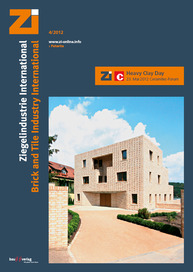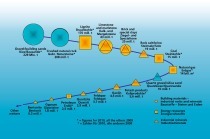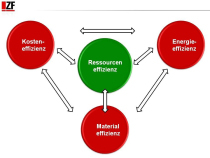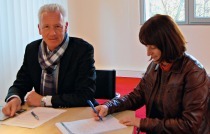Resource efficiency is becoming fashionable
In late February 2012, the Cabinet adopted the so-called “Resource Efficiency Programme” (ProgRess for short). This programme centres on increasing resource efficiency and resource conservation through the use of abiotic raw materials that do not serve primarily as energy resources (ores, industrial minerals, construction minerals). Biotic raw materials are only included to the extent that they are used for recycling purposes in exploitation of substitution options. While ProgRess is devoid of concrete statutory requirements, it does set signals and mandates of relevance for the brick and tile industry.
As users of clay-base raw materials, the brick and tile industry falls within the scope of ProgRess application. As brickmakers see it, however, they are already working resource-efficiently, because only the required quantities are being mined. The ProgRess standpoint, though, is somewhat more differentiated (as one would expect). Thanks to intensive supportive accompaniment by construction-sector associations, it was possible to have the auditing requirement concerning the introduction of so-called economic instruments (clear text: raw material taxes) deleted. The example box “Sustainable planning, construction and use of buildings and physical structures” still contains a number of critical items, though. For example, there is mention of major demand-side potentials and of using renewable resources in appropriate areas.
Despite the fact that our lobbying work succeeded in “softening up” ProgRess, the continued, effective defence of the brick and tile industry‘s interests will require continuous accompaniment of the intricate processes concerning resource-relevant issues.
Reason enough for the Research Alliance of the Clay Brick and Tile Industry Regd to spotlight resource efficiency at this year‘s Spring Meeting in Berlin on April 19. With a clutch of presentations tailored to the brick and tile industry, we hope to approach the subject from an appropriate angle and be able to provide some interesting impulses. As usual, contributions from the audience are more than welcome!
For information on the Research Alliance of the Clay Brick and Tile Industry Regd and details on membership, please contact liepach@ziegel.de.







